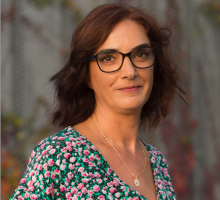Research activities
This line of research is strongly linked to the pioneering work I did in the area of transparent thin-film transistors (TFTs), demonstrating for the first time at international level that unconventional ceramic materials could function as true semiconductors. One of the most important milestones was the development of the first TFT deposited at room temperature, compatible with low-cost substrates such as paper and plastic, achieving the highest field-effect mobility ever reported. This technology has become a world reference and is now used by renowned companies such as SAMSUNG, with whom we have development contracts and a joint patent.
In the last decade, transparent and flexible electronics have become one of the key technologies with the greatest potential for high value-added applications, standing out for their energy efficiency, sustainability, low cost and reliability. Unlike other research groups, we have been able to process metal oxides at room temperature, making manufacturing simpler, more sustainable and affordable.
This fundamental research has given rise to new technological approaches with an impact on multi-billion dollar industries such as inkjet printing and smart medical diagnostic devices, opening up new perspectives in areas as diverse as health, mobility and energy.
The INVISIBLE project, funded by an ERC Advanced Grant, the first ever awarded to a scientist in Portugal, was the catalyst for this scientific and technological revolution. The project was selected as an ERC success story in 2011 and, in 2023, was once again highlighted as an example of a scientific breakthrough, recognized for having broken paradigms and opened up new lines of research. In recognition of its scientific, technological and environmental impact, in 2020 I received the Horizon Impact Award from the European Commission.
Another decisive milestone in my career was the invention of the paper transistor in 2008, long before the launch of the UN Sustainable Development Goals (2015). This disruptive technology, independent of silicon, offers a more sustainable and safer alternative, with potential applications in RFID tags, smart electronic tickets, food labels with sensors, rapid diagnostic tests and interactive business cards. This invention was recognized with a nomination as a finalist for the European Inventor's Prize (2016) by the European Patent Office. This work was the basis for the creation of the AlmaScience Collaborative Laboratory in the field of sustainable functional materials and green electronics.
The impact of this research has been widely recognized by the international scientific community. Nature magazine highlighted the laboratory I coordinated as a benchmark in sustainable electronics, in the article “Innovative Portuguese research center offers material benefits”.
Because of this trajectory, my group has established itself as a world reference in the fields of transparent electronics and paper electronics, with high-performance applications in various sectors.
In 2019, I obtained my second ERC Advanced Grant, with the DIGISMART project with a budget of €3.5 million. This project aims to process nanomaterials and nanostructures applied to electronic devices using a digital direct laser writing method, enabling the in situ synthesis of nanomaterials and nanofilms with microstructured growth by selective photothermal decomposition of semiconducting, dielectric and conductive precursors. This approach is supported by a multifunctional ALL-IN-ONE technological platform, using non-toxic materials, complemented by high-resolution nano-characterization techniques.

• Transparent electronics
• Paper Electronics
• Thin film transistors
• Metal oxide semiconductors
• Thin films
• Microelectronics
• Biosensors
• Nanotechnology
